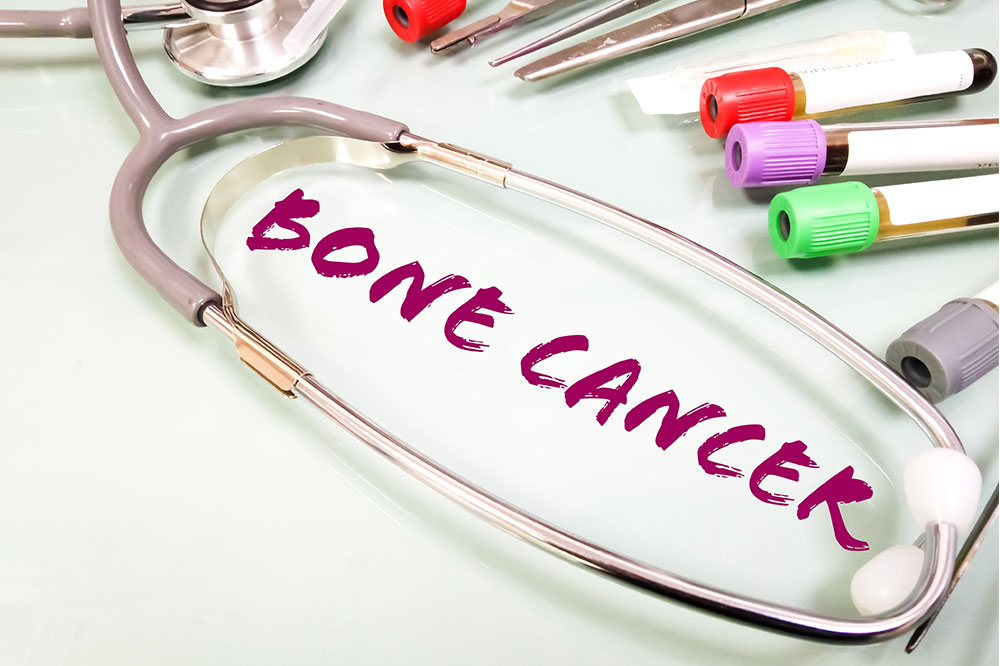7 warning signs of bone cancer to be aware of

Bone cancer is a rare but serious condition that primarily affects an individual’s pelvis and long bones in the arms or legs. Timely detection and treatment are crucial to manage the symptoms effectively. Here are some of the highly common warning signs associated with bone cancer as well as some of its causes and treatment options. This can help individuals recognize symptoms and take proactive measures in addressing this condition.
What is bone cancer?
Bone cancer, or bone sarcoma, is an uncommon type of cancer that makes up less than one percent of all cancer cases. It occurs once malignant cells start to grow in the bones and form a tumor. Bone cancer can be of various forms.
Osteosarcoma, which is highly prevalent in children and young adults. Here, the cancerous cells grow or produce excess bone cells.
Chondrosarcoma is another type of cancer where the cancerous cells begin to produce cartilage. It usually affects middle-aged and older adults.
Ewing sarcoma tumors primarily affect the pelvis, legs and arms of children and young adults.
Warning signs of bone cancer
Pain
In the initial stage, one may experience pain in the area where the cancer is developing. This is the most common sign and may also be associated with swelling in the area. Usually, in bone cancer, the pain may persist for a long time, or get worse with any physical activity. It may not show signs of improvement despite some popular home remedies. In children, bone sarcomas often show up near the knees. At times, parents may mistake the pain for a typical ache associated during a child’s growth stage, so the diagnosis can take longer.
Limited range of motion
In cases where a bone with a tumor breaks or fractures, particularly in the leg, it can result in a noticeable limp. Limping is typically observed in later stages of bone sarcoma and can be a serious symptom of the disease.
Weakened bones
Bone cancer weakens the affected bone, making it more susceptible to fractures. Fractures may occur even with minimal trauma or stress, and sometimes, a fracture is the first indication of an underlying bone tumor.
Joint swelling, lumps, and stiffness
When a tumor forms near or within a joint, it can cause swelling and stiffness. This leads to tenderness and limited range of motion in the affected joint. Individuals may experience discomfort and pain while attempting to move the joint, indicating a potential presence of bone sarcoma.
General malaise or fatigue
One may also experience a vague feeling of discomfort or unease without any specific symptoms or identifiable cause. It is often described as a sense of overall fatigue, weakness, or a lack of well-being. Individuals suffering from this symptom may find it difficult to identify the exact cause of their discomfort.
Unexplained loss of body mass
Cancer cells take up a significant amount of energy and nutrients from the body, which can affect one’s body mass without any changes in one’s appetite. This concerning sign may indicate any other underlying health issue, but if it is accompanied by above-mentioned symptoms, one should get an accurate diagnosis.
Anemia
Bone cancer is also characterized by a reduced number of red blood cells. This, in turn, can lead to one feeling anemic.
Further, as cancer progresses, it can make the affected bone break down, which releases calcium into the bloodstream. Over time, the calcium buildup in the bloodstream affects various processes, including digestion, causing issues like constipation, bloating, vomiting, and nausea.
Causes of bone cancer
Although the exact causes of bone cancer are still not entirely known, it is thought that they are inherited. However, researchers have linked an increased chance of acquiring the condition to a few factors. Rare inherited genetic diseases like Li-Fraumeni syndrome are among these contributing causes. A higher chance of getting bone cancer later in life has also been associated with Paget’s disease of the bone, which is more frequently diagnosed in older persons.
Additionally, radiation exposure during cancer treatment, like radiation therapy, may increase the chance of developing bone cancer in the future.
Diagnosis and treatment options
Imaging tests are important in identifying the location, size, and potential spread of bone tumors. The specific tests, such as bone scan, CT scan, MRI, PET scan, and X-ray, are chosen based on individual signs and symptoms, and they help in getting an accurate diagnosis and in treatment planning.
If bone cancer is detected, a healthcare professional will consider the tumor size, its growth, and whether other areas are affected to suggest a treatment plan. This plan can include surgeries to remove the tumor, chemotherapy, or radiation therapy to kill the cancer cells using high energy beams.






